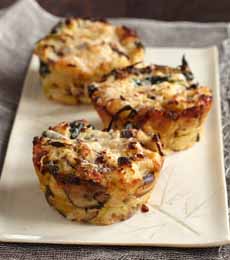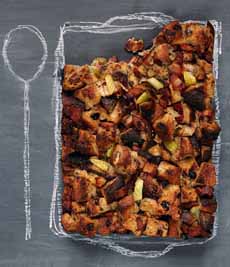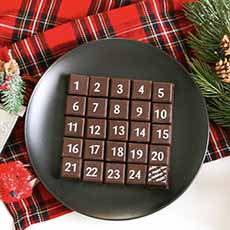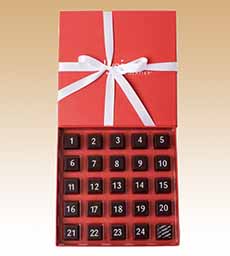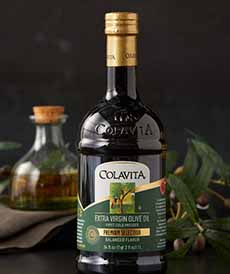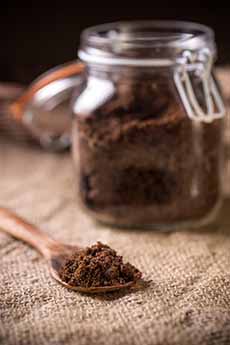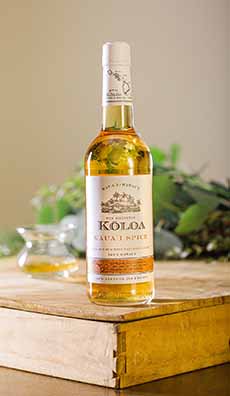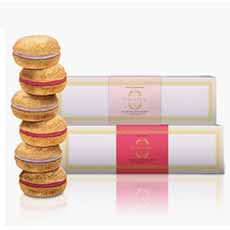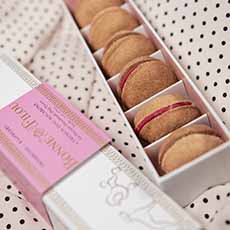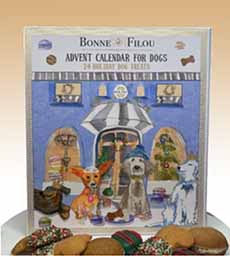|
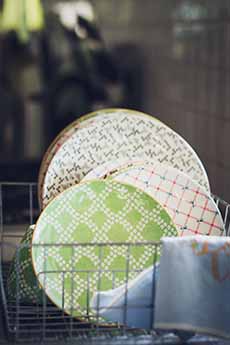
[1] Soft linen tea towels were originally created to dry fine china (photo © Tracey Hocking | Unsplash).
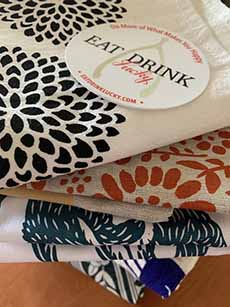
[2] Examples of the designs in the 2022 year’s tea towel collection (photos #2, #4, #4, #5, #6, and #7 © Eat Drink Lucky).
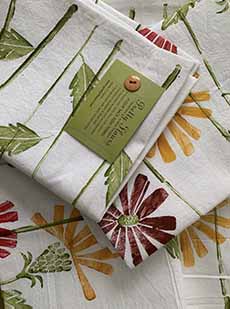
[3] Flowers.
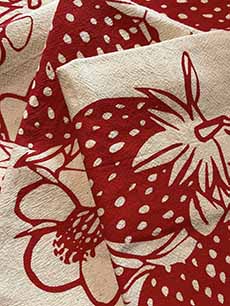
[4] Strawberries.
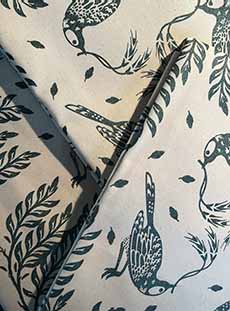
[5] Birds.
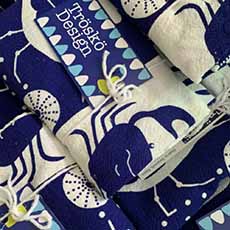
[6] Seashore.
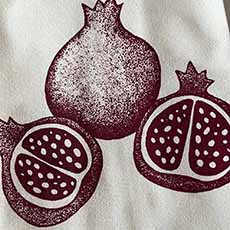
[7] Pomegranates.
|
|
We’ve seen many a food-related gift subscription over the years, but this one is different: a subscription to a series of contemporary artist-designed tea towels. For certain queens or kings of the kitchen (and the environmentally conscious), it’s a unique gift.
This is the third year for this series from Eat Drink Lucky, featuring 12 original designs created by Maine-based artists. They elevate the utilitarian dish towel into works of functional art.
There’s more about the subscription below, but first: What’s a tea towel?
A tea towel is a more elegant dish towel.
Tea towels are a soft cloth made of linen, cotton, or a blend. The softness enables them to polish or dry delicate items. They usually have an imprinted or woven pattern or design.
Dish towels are made from thicker and more absorbent terry cloth.
Both are approximately the size of a bathroom hand towel, ranging from 16″ x 28″ to 18″ x 30″.
The history of tea towels is below.
WAYS TO USE TEA TOWELS
You can never have too many tea towels. They’re used for much more than drying dishes. For example:
Decorate the tabletop.
Dry your washed produce, keep greens crisp in the fridge, line the crisper drawer.
Line a bread basket or serving tray.
Line drawers and shelves in any room of the house.
Set out as guest bathroom towels.
Stack between plates, pots, and pans to prevent scratches.
Use as bibs on spaghetti night, e.g.
Use as hot pads or potholders.
Use as napkins and placemats.
Wrap baked goods, wine bottles, pillar candles, or other small gifts as an “extra gift” instead of paper gift wrap.
For Worn Or Stained Towels
Don’t throw them away—they still have a long life!
Buff and polish silver, glassware, and other items.
Dust cloths.
Mirror/window cleaning.
Spot cleaning on clothes, rugs, or upholstery.
Shoeshine cloths.
GET YOUR ARTIST TEA TOWELS
Bring more color and fun to someone’s kitchen with a tea towel subscription in three, six, and 12-month options. The first monthly tea towel for the 2023 collection will arrive in mid-January.
Each towel is individually wrapped, accompanied by a note introducing the artist.
Some recipients buy a subscription for themselves and keep them all, while others keep them on hand as last-minute hostess gifts, birthday gifts, teacher gifts, etc.
And as previously noted, the gift is environmentally conscious, as tea towels reduce dependence on paper towels.
Head to Eat-Drink-Lucky.myshopify.com.
THE HISTORY OF TEA TOWELS
Dating to 18th-century England, tea towels were originally created to use to insulate teapots, catch drips from the spouts (hence the name), and dry fine china. They were designed to match the rest of the household’s table linen.
They grew to be utilized not just for these purposes, but in tea ceremonies and rituals, as souvenirs, and as a utilitarian drape to keep breads and cakes fresh.
Upper-class ladies used their needle skills to create beautiful heirlooms to be passed down through the generations. Girls used tea towels to practice embroidery, often gifting friends and family their tea towels stitched with flowers, initials, or other designs.
During the 19th century with the Industrial Revolution, the tea towel became a more widely available consumer item. Machines could quickly weave designs, and produce them in more affordable cotton (although linen, softer to the touch and twice as strong as cotton, was preferred by those with means).
Tea towel trivia: Vincent Van Gough painted some still lifes on tea towels, one of which sold for £2.1 million at auction in 2000. Why did he paint tea towels? At times he ran out of canvas and used whatever he could get ahold of [source].
How about buying yourself a very affordable version of a Van Gogh sunflower on a tea towel?
In previous centuries, American housewives with limited means would often reuse rough cotton animal feed sacks or flour sacks by cutting them up into dish towels. But they made them attractive by embroidering them, despite the difficulty of pushing a needle through the coarse weave of the sack.
The 20th Century & Beyond
Styles change, and by the 20th century, many tea towels were made with striped or checked cloth for a more contemporary, decorative touch.
But the tradition of hand-decorating tea towels survived in home crafting for self and gifts.
Then came paper towels.
Paper towels were first invented in 1879 by the Scott Paper Company for sanitary medical use. In 1931, the company realized that paper towels had huge potential in the home.
They created a new grocery category with rolls of paper towels manufactured specifically for kitchen use. Even with their higher cost, given the convenience they brought to the average household, paper towels began to replace cloth towels [source].
In the latter part of the 20th century, paper towels—disposable but bad for the environment—replaced tea towels and dish towels in many homes. (Here’s why paper towels are bad for the environment.)
But tea towels and dish towels are found in kitchens and homes across the globe.
And most recently, couples have used them to print creative wedding invitations, or as favors at the reception.
Thanks to The Radical Tea Towel for a substantial amount of this glimpse of history.
|
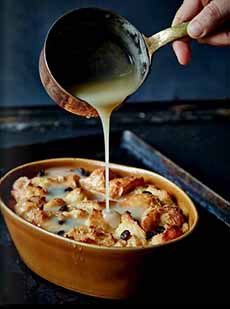
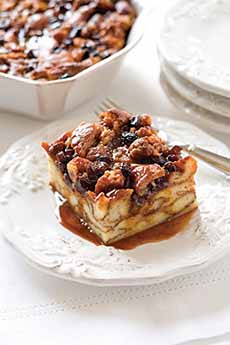 ]
]